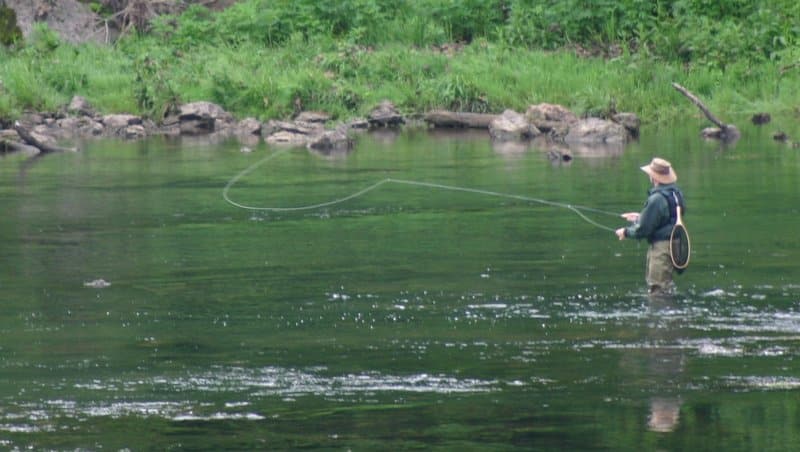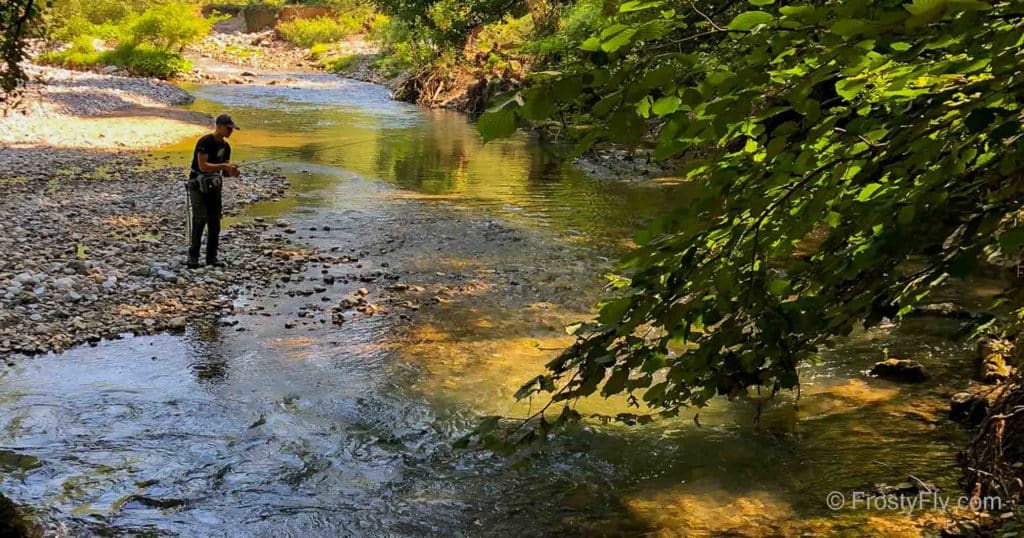by Dimitri Ristic
I met Boris for a coffee and a friendly talk, as we sometimes do. Boris is much younger than me, but fly fishermen don’t choose companions by age. Somehow, conversation was fishing streamers and I mentioned a muddler pattern. In my fly box, one whole side is just muddler patterns and the other streamer patterns. I don’t use streamers that often but if I decide to fish using streamer fly (early in the season or late in the fall), my prime choice would be a muddler. This time I will not talk about fishing using muddlers, but fishing other type of streamers.
I strongly believe that using streamers require techniques which definitively need to be followed for better chances of hooking those worried trout. Streamers were not popular as much as wet flies and nymphs till the 30’s of the last century. As I understand, an article by John Knight about Mickey Finn brought an interest to fly fishers and after this time streamers became very popular flies. Streamers have always been the flies I fall back on when the action is slow and I want to cover the water to search out the larger fish. Searching water for big trout is much more effective with streamers then small flies. Trout can see those big streamers from greater distances. Also, streamers represent a bigger mouthful and the fish will swim farther to get them. Sometimes, streamers do not represent food, but a challenge to a big trout, which may try to chase them from its feeding territory.
When you fish using streamers, it is not logical to give the same action to a streamer as you give to a wet fly or a nymph. You should try to imitate minnow’s natural action with long swift movements, not with the short, slow moves as some anglers use for wet flies and streamers. When casting streamers across swifter water, give line an immediate upstream mend. As soon as the line lands, give a sharp pull to make a fly to move. To fish, the movement is a signal that it is probably something alive. If your line lands slack, without motion, the fish may figure it is inedible and turn away as it figures it is not worth chasing. Mends are not made well on a tight line. If you know where a fish is laying, cast your streamer well upstream and let it drift into a position only a foot or two above the place. Then, give it a sudden twitching, coming-to-life action, and follow with a two-foot yank. The whole idea is to catch a trout’s attention with a streamer and then challenge a trout to catch it to go for it.
Study the minnows you see in the stream water you fish. Then try tying a streamer patterns imitating the minnows as best as possible. Trout respond to realistic flies, as well as wild, unreal attractors. An example is Mickey Finn fly which is used by many fly fishers. Materials such as Marabou tied on Mickey Finn gives the fly fluttery action in the water and it is more effective than fly tied with buck tail. Marabou is not as durable as ordinary hair or feathers, but has a soft life-like motion in the water.
Trout would respond to two types of motion. The motion of the fly trough the water and the motion of the fly itself. The rule is to make streamers with stiff materials for fast, heavy waters and with soft materials for slow waters. One of the problems with tying streamers with long feathers is that long feathers are likely to swing around and get caught in the bend of the hook. This will make the fly twist or ride unnaturally. To solve this problem, tie a fairly long tail, than have short feathers coming from the head of the fly to the tail. Feathers should be long enough to make the wing and tail continuous, but not long enough to catch in the band of the hook, even if the current, or your motion, swing the feathers into the bend of the hook. Matuka flies also solve this problem.
Next time, if my free time permits, fishing muddler will be my next subject.
Dimitri




